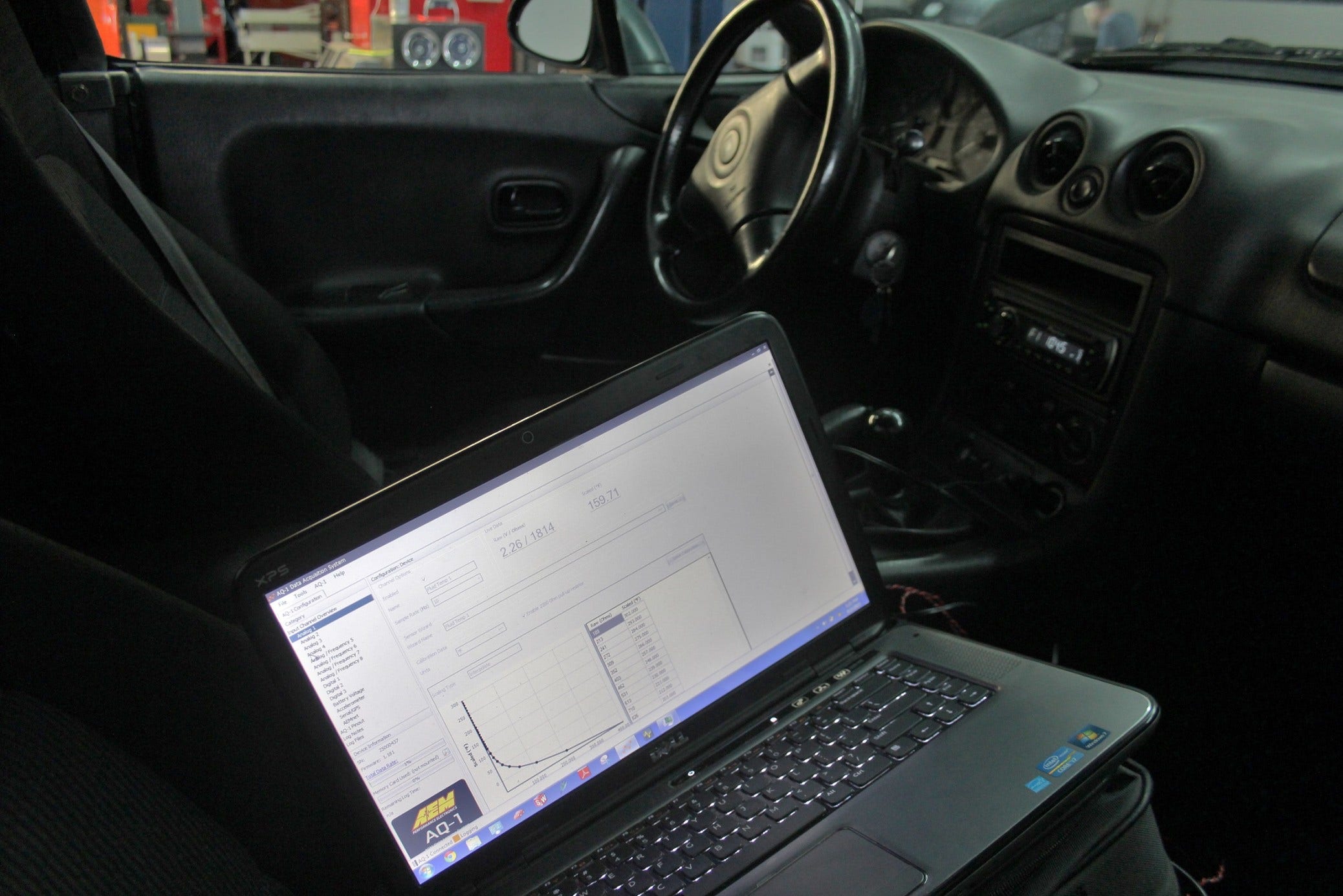
Mazda Miata (NB) Oil Cooler R&D, Part 3: Oil Warm-Up Testing
Interested in picking up our NB Miata oil cooler kit? Check out our discounted pre-sale linked below.
Mishimoto 1999-2005 Mazda Miata Oil Cooler Kit Pre-Sale!
During the previous articles we mentioned that we would be conducting experiments for the stock oil cooler/warmer. Myths and claims exist regarding its impact on the heating of engine oil as well as its impact on cooling. We decided to check out both sides of the spectrum and support them with some actual data. First up, warm-up speed both with and without the stock heat exchanger.
Testing Setup
Setting up the sensors and equipment for this test was relatively simple. For testing the system with the stock heat exchanger in place, we simply installed our oil sensor adapter below the filter and then installed our temperature sensor. Below is a look at the sensor adapter.

Mishimoto oil sensor adapter for testing the Mazda Miata oil cooler
Check out this component installed with the sensor in place.

Mishimoto oil sensor adapter for testing the Mazda Miata oil cooler
Setting up for the test that eliminates the stock cooler requires a bit more work. The coolant lines running to the cooler are joined via a brass hose connector. The heat exchanger is then removed. To fit the oil sensor adapter, a spacer is needed to push it away from the engine block. Without a spacer, the adapter does not fit into place due to features on the engine block. Below is an image of the spacer in place.

Mishimoto oil sensor adapter for testing the Mazda Miata oil cooler
The adapter is then placed over this spacer and tightened down with the nut for the stock oil housing.

Mishimoto oil sensor adapter for testing the Mazda Miata oil cooler
In addition to the sensor adapter and sensors, we used the AEM AQ-1 Data Logger to capture our temperature data and relay it to our laptop for monitoring.

Oil warmer data collection
Testing Conditions
Our goal with these tests was to eliminate as many variables as possible. Both tests were performed on the same day, one first thing in the morning and the second after lunch. This allowed for an appropriate cool-down of the vehicle and also kept ambient temperatures relatively stable between tests.
Ambient Temperature: 70°F-75°F
Location: Inside shop, on lift
Vehicle Operation: Vehicle left at idle from ambient to 175°F (oil temperature)
Data: Temperature (Fahrenheit) collected over time (seconds)
Data Collection Results
Once we ran each test, data was compiled in Excel and converted to a plot that accurately depicts our findings. Check out the plot!

Oil warm-up plot
Yes, you are seeing that right. Both lines seem to follow nearly an identical path toward warm-up. One might expect the stock heat exchanger to greatly accelerate oil temperature warm-up, but the impact seemed marginal during our tests.
This result tells us that the stock cooler could be removed if we found any negative impacts during our upcoming at-speed testing. If removed, the impact on oil warm-up would be negligible in terms of idle warm-up speed.
Coming Up!
With some preliminary results out of the way, we can jump into some on-road tests. Next time we will be conducting on-road steady state data collection with all three setups for comparison.
Thanks for reading!
-John




